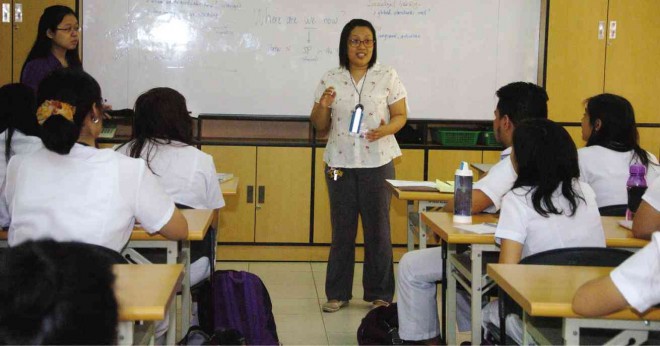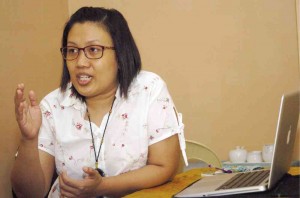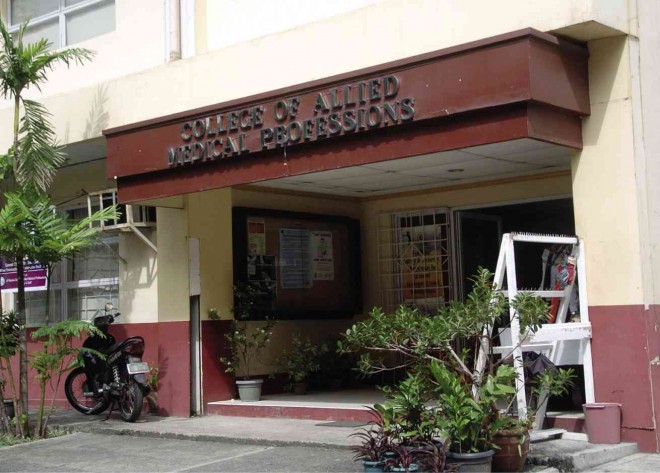UP’s pioneering program sustains mission to treat speech disorders
(Editor’s Note: Children with development disabilities need the services of speech language pathologists and speech therapists. So do children with oral motor, swallowing and speech disorders. And so do adults who have lost their speech because of stroke, brain injury or seizures.
There is, however, such a dearth of these professionals, owing to the limited number of graduates in the field.
In fact, for 31 years, only the University of the Philippines College of Allied Medical Professions was offering Bachelor of Science in Speech Pathology. In 2009, the University of Santo Tomas became the second university to offer the course. It was followed by Cebu Doctors University in 2012 and De La Salle University-Dasmariñas in Cavite province just this year. In this issue, we begin our series on these four institutions of higher learning.)
As the national university, the University of the Philippines (UP) has often blazed the trail for new programs, introducing new courses even before the need for them becomes evident.
Article continues after this advertisementUP launched the four-year Bachelor of Science in Speech Pathology (BSSP) degree program almost four decades ago, in 1978, and it would remain the only school offering the course until the new millennium.
Article continues after this advertisementJennifer U. Soriano, associate professor and chair of the Department of Speech Pathology (DSP) of UP Manila’s College of Allied Medical Professions (CAMP), said both the Manila and Diliman campuses proposed to offer the program.
Dr. Guillermo Damian, first dean of what was then the School of Allied Medical Professions, recommended the creation of the undergraduate BSSP program at UP Manila. At the same time, then Diliman Arts and Sciences dean Francisco Nemenzo Jr., who later became president of the UP system, had wanted the program for the Department of Speech and Communication.
The Board of Regents (BOR) approved UP Manila’s proposal and the undergraduate program accepted its first students in school year 1978-1979. Rosella de Jesus, who completed a graduate course at the University of Hawaii, set up the program and became the first DSP chair. With two Peace Corps volunteers, Soriano said, the department had what amounted to a three-person faculty.
The first four or six enrollees had already completed another four-year course, Soriano said, and wanted BSSP as a second degree. Only one in the first group graduated after four years, the rest graduating later.
Soriano said that in proposing the program, the school considered the rehabilitation needs of Filipinos and identified speech as a critical area.
Many adults would lose their speech or suffer impairment because of illness or accidents, Soriano said. Children would have problems because they were born with a cleft lip or palate, or had developmental issues like autism.
Lisping and stuttering caused emotional and social problems, making people feel inadequate.
More skills needed
Although often used interchangeably with speech therapy, some experts said speech pathology differed in terms of the skills required. Therapy focused on correcting or easing speech disorders. Pathology did not just correct speech disorders but also looked into their causes. It involved both diagnosis and treatment.
Soriano said BSSP dealt with physiological and other causes of speech disorders. Research was disease-oriented and looked into overall health “to eliminate the cause(s) of the disorder.”
The American Speech-Language-Hearing Association says “an important characteristic of the practice of speech-language pathology is that, to the extent possible, clinical decisions are based on best available evidence …. Current, high-quality research is integrated with practitioner expertise and the individual’s preferences and values into the process of clinical decision-making.”
Soriano said the discipline grew out of a “very medical perspective,” which was probably why the UP BOR decided to make it a part of the health/medicine-focused UP Manila. It could also be why some students take BSSP as a premedicine course.
Soriano said that although CAMP had been offering BSSP for 36 years, it was only in 2005 that a noticeable increase in interest in the course encouraged other schools to offer their own program.
Soriano proudly pointed out that CAMP alumni were often involved in setting up the new programs.
In 2011, Soriano said, the Commission on Higher Education finally issued guidelines on the BSSP education program. But attempts to further strengthen the course by requiring graduates to pass a government board examination have languished in Congress.
Former Sen. Orlando Mercado filed the first bill, which was forgotten after he left the Senate. Suspended Sen. Jinggoy Estrada filed the latest bill.
Although the biggest number of BSSP graduates was recorded in 1988 when there were 15, Soriano said the program now averages 30 new students a year, with only one or two dropouts. Total enrollment this year in all levels is 130. In almost four decades of existence, DSP has graduated about 600.
DSP, alarmed by the “brain drain” in 2002, as majority of graduates were leaving for foreign jobs, adopted the lateral entry program that allowed students in other disciplines to shift to BSSP.
But the sharp rise in enrollment prompted CAMP to revert to the old policy of accepting only new UP College Admission Test qualifiers. Lateral enrollment in 2003-2011 resulted in the increase of new students from 35 to 50 in one academic year, “straining our resources,” Soriano said.
“We did not want to compromise the quality of teaching and the quality of graduates, so lateral admission was suspended,” she said. The department currently has nine faculty members, six of them working full-time.
A major part of the BSSP course is internship or clinical training. DSP rules require graduating BSSP students to complete “1,120 hours of supervised clinical experience,” providing them with skills in “assessment and evaluation, treatment planning, clinical documentation, treatment implementation, decision-making and interpersonal skills.”
Soriano said interns could work in the college-based clinic, which catered to low-income clients, or they could work in hospitals, private clinics, specialty clinics with specific clientele like those with cleft lip/palate or hearing impairment, special children’s schools or community-based centers. Needless to say, the same institutions are the prospective employers of BSSP graduates.
Research work was also encouraged, as Soriano said there was a need for more researchers.
BSSP degree holders can work as college instructors but will need master’s degrees to become associate professors. Would-be teachers will also need units in education.
CAMP has offered the Master of Rehabilitation Science (Speech Pathology) since 1997. But a doctorate degree program could take a while, Soriano said; even abroad, very few schools offered the graduate course.
Soriano said about a third of DSP enrollees were drawn to the course because of relatives with speech impairment problems. Another third were encouraged by parents who saw good prospects for overseas employment. The rest were young people who had not decided on what course to take and were drawn by the seeming novelty of the program.
But while several students started out with an eye on a foreign job, the DSP chair said the Iskolar ng Bayan (UP tuition is heavily subsidized by the government) eventually “adopted the UP point of view” and left the university eager to serve the country first.
“The feeling is very strong at UP that you are studying for the country—eventually [BSSP students] feel they have to do something for the country. When they set up an association, they said they wanted to help people. That’s the UP spirit. They don’t leave the university without being imbued with the spirit of service,” Soriano said.
Despite Soriano’s faith, however, UP Manila has instituted the Return Service Agreement (RSA), holding graduates to a two-year contract to remain in the Philippines. The RSA covers the current fourth-year BSSP class.
Soriano said that while the university understood that opportunities could be better elsewhere, it wanted graduates to help the Filipino people first any way they could and anywhere for two years.
Evolving
As interest in speech pathology was growing, Soriano said, the discipline was evolving and adopting a biopsychosocial perspective.
“Our main goal is to mainstream clients. Often, they can talk to experts but cannot talk in public [even to their own families and friends] because ordinary people feel uncomfortable talking to them,” Soriano said.
While speech disorders could have medical roots, society could help eliminate the problem, she said. “Sometimes, society prevents them (people with speech problems) from making progress. We may be able to help people but we have to teach society to accept them regardless of their disabilities,” she said.
The discipline now sought to address both medical and social causes, she said.
According to Soriano, DSP considers personal interaction the most important skill they can teach clients, so the department does not use digital equipment and gadgets so much.
“It is more efficient to [restore and/or teach] speech; it is more natural, so we are more focused on speech rather than the use of technology and gadgets,” she said.
As in many other professions, most BSSP graduates are in Metro Manila. There are around 400 of them, Soriano said. About 20 are practicing in the Visayas and one or two are in Mindanao.


